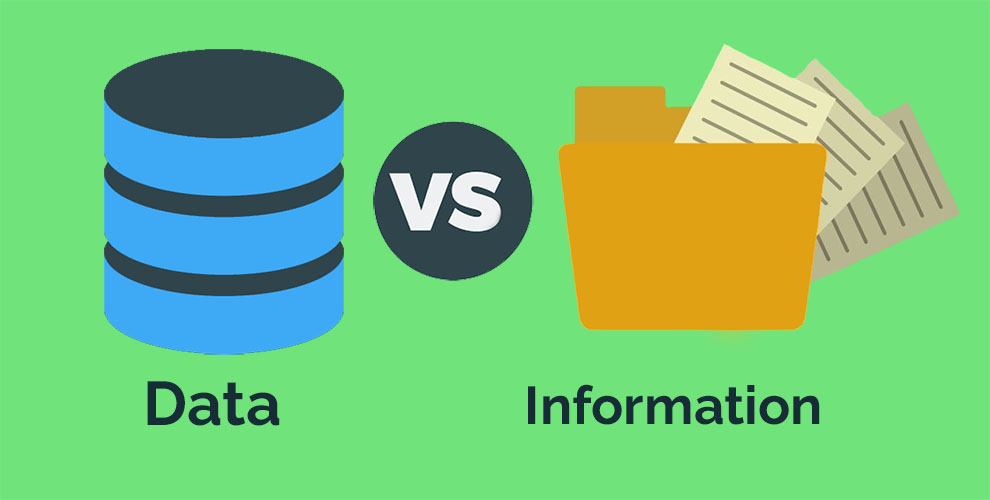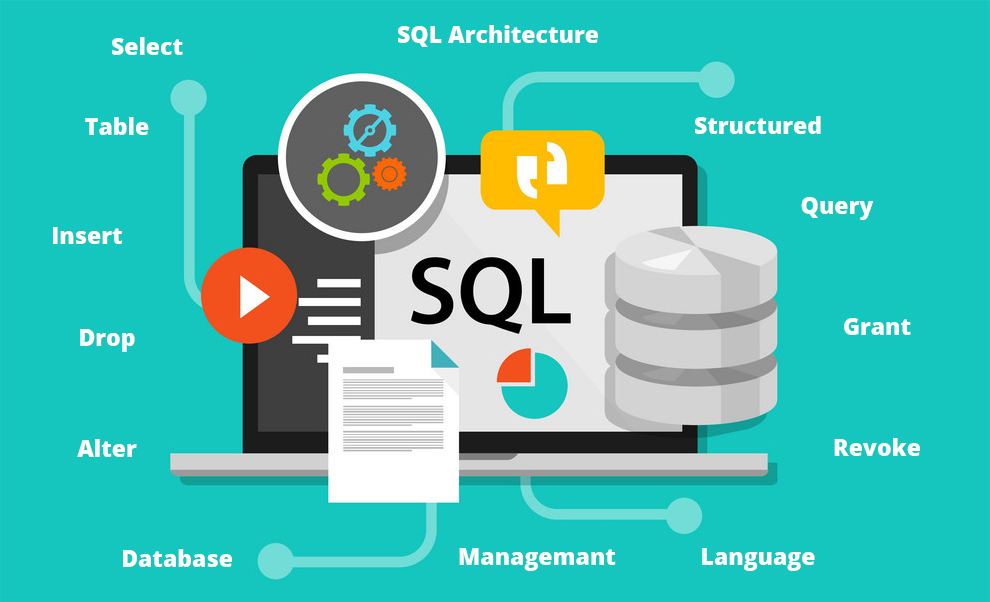Everybody knows about the terms ‘data’ and ‘information’, but only a few know the accurate usage of the terms or what the words mean individually.
Most people presume that data and information are the same things. So we are here with this guide to help the readers distinguish between data and information and understand their characteristics.
After going through this article, the readers will be able to spot the differences between data and information and compare data and information with the help of day-to-day examples.
We have also provided ample data vs information examples to give your learning a kick start.
Key Differences
|
Jump To
- What Is Data?
- Types Of Data
- What Is Information?
- How Are Data and Information Related?
- Difference Between Data and Information
- Examples of Data and Information
- How Is Data Different from Information?
- Uses Of Data
- FAQs
- Final Thought
What Is Data?
Data originates from the Latin word ‘datum,’ which means ‘something given.’ Data in itself is a raw figure or an unorganized, variable piece of value that has no meaning directly.
When put together, similar sets of data can provide valuable information and help determine the statistics of a particular subject/topic.
Types Of Data
We can broadly classify data into 2 types: Quantitative data and Qualitative data.
Let us see what these two categories entail.
1. Quantitative Data: Quantitative data, as the name suggests – is the type of data that can be easily quantified, that is, expressed in terms of “how many, “how much,” and “how often.”
Quantitative data can represent a large variety of data. Simply put, it can especially be measured by using numerical variables. Examples of quantitative data are:
- Your test scores
- Time taken by you to complete any activity
- Temperature of a particular location and so on.
Quantitative data can be sub-divided into 2 distinct groups: Discrete Data and Continuous Data.
- Discrete Data: Discrete data comprises only numeric integer values. For example, if you are given to count the number of days of a month, it will always be a whole number because no month has 30.5 days.
- Continuous Data: Continuous data is the kind of data that can be measured at different scales. It can be further sub-divided into smaller pieces which will equate to the same value. For example, you can measure the weight of a baby in kilograms, grams or even milligrams. Of course, the scales are different, but the result after measuring will be the same. Continuous data can take any kind of numeric value.
2. Qualitative Data: Qualitative data can’t be expressed as a wide variety and, unlike quantitative data, cannot be measured.
Qualitative data determine the demography of an area or major factors leading to a particular event. Examples of qualitative data are:
- Names of people and places
- Ethnicity of people
- Flora and Fauna of a region and so on
Qualitative Data can also be divided into two major categories: Nominal Data and Ordinal Data
- Nominal Data: Nominal data, simply put, signifies ‘names,’ ‘categories,’ or ‘labels.’ Example: names of people, gender of people, ethnicity, etc.
- Ordinal Data: Ordinal data is basically used to determine a position relative to every situation. Example: high-medium-low, first-second-third, ratings and so on.
What Is Information?
When organized sets of data are analyzed together and given a structure, it becomes information. Information is usually a simplified form of data that can be gauged by common people and aids in their decision-making processes.
Information can be facts, statistics or just a simple message. It provides a backdrop and context for data.
Data Vs Information Relationship
The relationship between data and information is pretty simple. Information is made up of data. Similar sets of data contribute to making up invaluable information that is concise and easily understood by everyone.
| Data→ Processing→Information |
For example,
Data collected from the members of a family:
| Member | Weight |
| Child | 35 kg |
| Mother | 58 kg |
| Father | 68 kg |
| Grandma | 56 kg |
| Grandpa | 66 kg |
Similarly, if we had collected data about the height and age of the family members, we could predict if they were all healthy or overweight.
A dietician could even make up a diet chart for the family members to follow. This is how information and data are very closely related.
We can even compare data and information and study ‘data vs information’ for more meaningful results.
Now that we have studied the relationship between data and information, the next question that arises is – “How is data different from information?’’
Differences Between Data And Information
Mentioned below are some noteworthy disparities between data and information:
| No. | Data | Information |
| 1 | Data is a raw figure or unit of information which has no meaning by itself. | Information is analyzed data that has some meaning. |
| 2. | Data does not depend on information | Information is entirely dependent on data |
| 3. | Data is collected based on observations and surveys. | Information is processed and structured data. |
| 5. | Data is a unit or random collection of units and numbers | Information is processed data that is often displayed in the form of texts and graphs. |
This is how you can distinguish between data and information.
Data and Information Compared With Examples
To aid you in understanding the difference between data and information effectively and efficiently, we have provided a few examples of data vs information:
1. Data: Individual scores of students in an exam.
Information: The average score of the students, the highest marks, the lowest marks, etc.
2. Data: Ethnicities of people living in New York.
Information: The dominant ethnic race in New York, ethnicities that are not present in New York and so on.
How Is Data Different From Information?
As mentioned earlier, data is meaningless on its own, whereas information is understandable. So the next time you read something, and it makes sense to you, know that it is a piece of information.
Data, on the other hand, when presented randomly to you, without context, will make no sense.
Let us consider data vs information examples to compare data and information effectively.
The numbers – 100, 212, 0 and 32 by themselves make no sense. They are just random numbers. This is called data.
Now, let us give some context to these numbers. Let’s assume these numbers represent the freezing and boiling point of water in Celsius and Fahrenheit, respectively.
We now understand why those numbers are put together in a single category. This is an example of information.
Uses Of Data
The main use of data is to contribute to building valuable information. It also helps:
1. Prevent Problems from Maturing by Giving Early Signs of a Pattern:
Data allows you to monitor the fitness of important structures in your organization. By utilizing records for pleasant monitoring, businesses are capable of replying to challenges before they end up full-blown crisis.
2. Find Solutions to Problems
Looking at data vs information charts side-by-side helps us strengthen more correct theories and put more high-quality solutions into specific problem areas.
3. Make Informed Decisions
Good data records give indisputable evidence that helps us make important, life-changing decisions. We no longer have to rely on intuition and guesses while making choices if we have the data.
4. Be Strategic In Your Approaches
Data will increase efficiency. Effective record collection and analysis will enable you to direct scarce assets to the most needed place. Data will additionally assist groups in deciding which areas take priority over others.
5. Keep Track Of It All
Good information permits agencies to establish baselines, benchmarks, and goals to keep moving forward. Utilizing data is the way by which we can keep track of everything necessary to us like budgets, scores, profits etc.
FAQs
Q. What are the similarities between data and information?
Ans: As we have seen a clear data vs information comparison, it is also important to note that data and information are also similar. Information is basically organized and structured data. So, without data, there will be no information.
Q. What are the differences between data, information and knowledge?
The key differences between data, information and knowledge are:
- Data is fragmented pieces of symbols and characters strung together; information is refined data, whereas knowledge is useful information. Data lacks context when looked at singularly, whereas information gives context to data, and knowledge brings depth in understanding to such information.
- Understandinginformation alone is not sufficient to make any predictions. Knowledge is also required to understand the information obtained.
- Information is a text that answers the questions of who, when, what, or where, while knowledge is a text that answers why and how.
Q. What is the difference between data vs information in a database?
Ans. Data is a single unit of information that carries no logical meaning.
Whereas information present in a database is a group of similar kinds of data that has been placed under the same category.
Hence, by looking at a database, we can derive a relationship between the individual units of data.
It still does not have complete meaning but gives us a primary idea about the premise of that particular group of data in the database.
Final Thought
Remember while using the terms ‘data’ and ‘information’ that even though they might commonly be used as synonyms, their implications are vastly different.
We have stated some data vs information examples above which clarify that data is meaningless on its own but most vital to the building information.
On the other hand, information has a lot of meaning and can help make life-changing decisions, but it is completely dependent on single units of data.
This article has clearly and concisely summarized the differences and similarities between data and information for beginners to understand. Hopefully, you are now in a position to look around and distinguish between data and information correctly.




